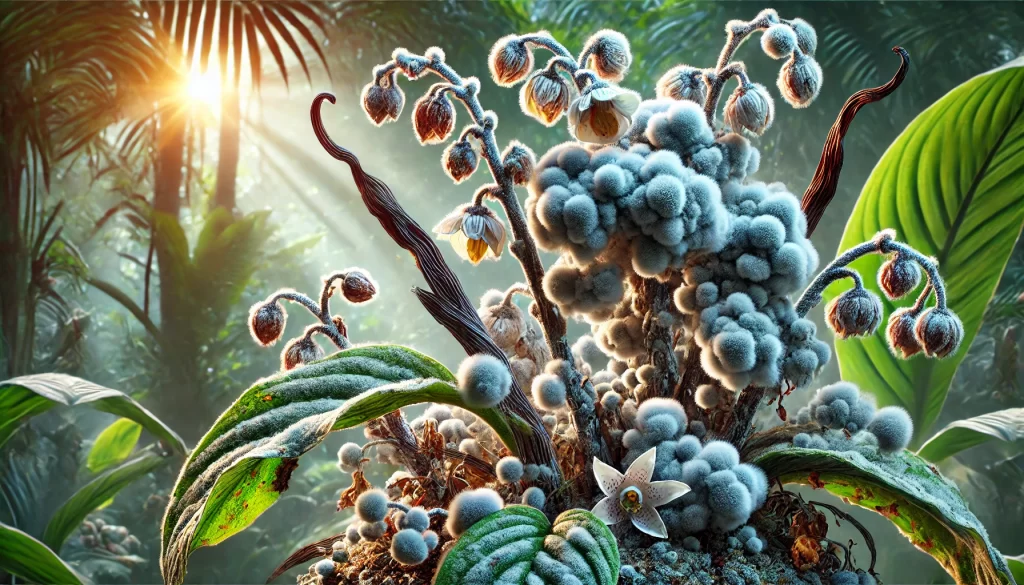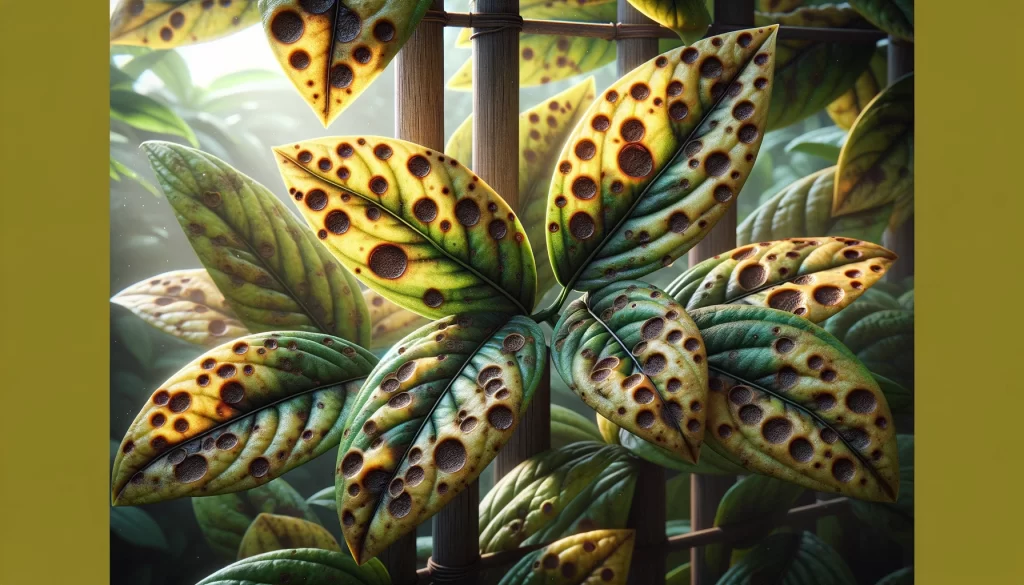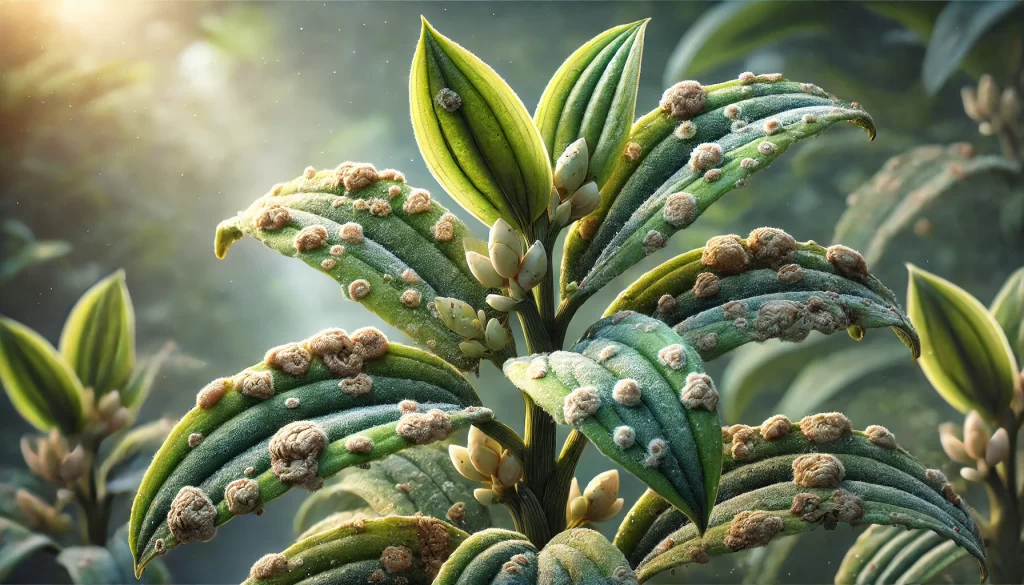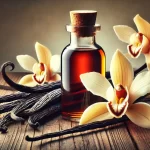Vanilla cultivation, being a tropical orchid, faces various challenges related to diseases that can affect its growth, health, and production. Early detection of these diseases, recognizing their symptoms, and applying appropriate treatments are fundamental steps to maintaining a healthy crop. Below, some of the most common diseases affecting vanilla are described, along with their characteristic symptoms and recommended management and treatment strategies.
1. Root Rot
Symptoms:
- Wilting and yellowing of leaves.
- Degradation and decomposition of roots, which become soft and dark.
- Limited plant growth and failure to absorb nutrients.

Treatments:
- Proper drainage: Improve soil drainage to avoid waterlogging that promotes rot.
- Removal of diseased roots: Cut and dispose of affected roots to prevent spread.
- Application of systemic fungicides: Use specific products to combat root pathogenic fungi (e.g., species of the genus Phytophthora).
- Improve soil aeration: Incorporate organic materials that improve soil structure and reduce excessive moisture retention.
2. Gray Mold (Botrytis cinerea)
Symptoms:
- Gray, moist spots on pods, flowers, and leaves.
- Browning or blackening of affected tissues.
- Development of a grayish fungus that proliferates in high humidity environments.

Treatments:
- Moisture control: Improve ventilation and reduce excess humidity in the plantation.
- Removal of affected tissues: Remove and dispose of infected flowers and leaves to prevent the fungus from spreading.
- Application of fungicides: Use preventive and curative fungicides based on copper or sulfur, following product instructions.
- Careful post-harvest management: Avoid damaging or improperly storing harvested pods, as gray mold can develop under inadequate conditions.
3. Leaf Spot
Symptoms:
- Appearance of dark, round or irregular spots on leaves.
- Deformation and premature drop of affected leaves.
- Reduction in photosynthesis and plant vigor.

Treatments:
- Removal of affected leaves: Cut and remove severely spotted leaves to reduce the source of infection.
- Improve cultivation conditions: Maintain a moisture balance and good ventilation, avoiding conditions that favor fungal proliferation.
- Specific fungicides: Apply foliar fungicides that combat the causes of leaf spots, based on active ingredients recommended for vanilla cultivation.
4. Scab or Downy Mildew
Symptoms:
- Development of white or gray mold on the surface of leaves and pods.
- Sticky and weakened leaves, with risk of premature drop.
- Flowers and pods may show spots or mold, affecting product quality.

Treatments:
- Environmental control: Regulate humidity and avoid excessive sprinkler irrigation to decrease the appearance of downy mildew.
- Improve air circulation: Prune excessive vines and foliage to increase ventilation.
- Preventive application of fungicides: Treat preventively with specific fungicides for downy mildew before symptoms appear, following an integrated disease management program.
General Disease Management Strategies in Vanilla
- Constant monitoring: Regularly inspect plants to detect early symptoms of disease and act promptly.
- Proper cultural practices: Maintain hygiene in the cultivation area, remove decomposing plant material, and avoid injuries to plants that may facilitate infections.
- Selection of resistant plants: Use vanilla varieties known for their resistance to certain diseases when possible.
- Crop and soil rotation: Alternate vanilla planting with other crops or resting periods in the soil to reduce the buildup of specific pathogens.
- Responsible use of chemicals: Apply fungicides and other treatments responsibly, following instructions and safety intervals to avoid resistance and minimize environmental impacts.
Conclusion
Diseases in vanilla cultivation can represent a significant challenge, but with a preventive approach, constant monitoring, and proper application of treatments, their impact can be reduced. It is essential to maintain a balance in cultivation conditions, improve field sanitation, and use phytosanitary products responsibly to preserve plant health and ensure high-quality pod production.
 AgronoBlog – Agriculture Blog
AgronoBlog – Agriculture Blog 


